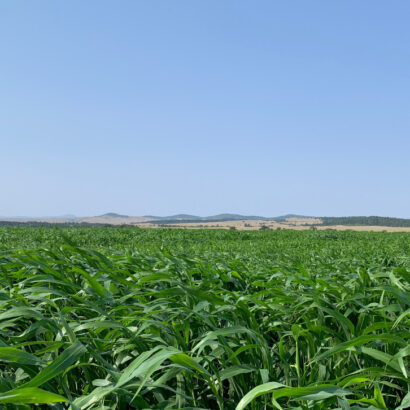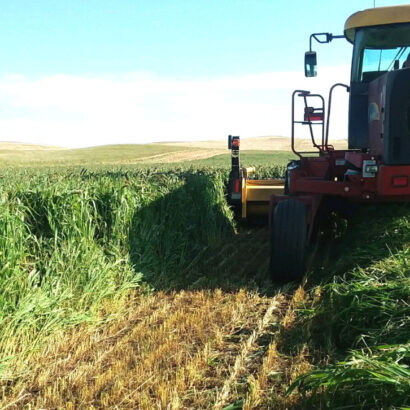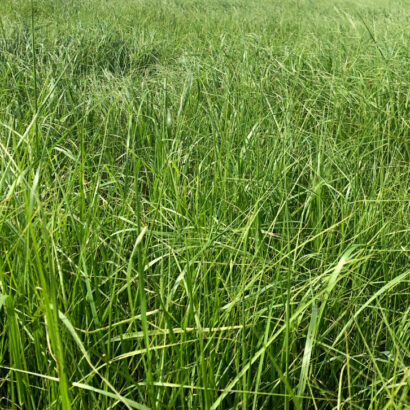As the year progressed, we not only watched our grass supply shrink, but we also watched our water supply in creeks and dugouts disappear. Now that the water dissipated from low lying land, baron ground is left behind. Areas like these, that have the potential to support grass growth, are providing the opportunity for more grazable acres. If these areas don’t have standing water annually, I recommend seeding them.
Acres like these tend to have two different scenarios that lead to different seeding recommendations: the pothole acres that are mucky and salty, and the low-lying areas that have ponding water for extended periods of time. Both have unique characteristics that require different grass species.
The mucky, salty soils require grasses that can tolerate a high pH, both wet and dry soil conditions and saline soils. The most suitable grasses to overcome these challenges are wheatgrasses. Generally, wheatgrasses are tough, durable forage grasses that grow in a wide variety of conditions. The hybrid Green Wheatgrass variety, AC Saltander, has proved to work best here. Not only will it survive the conditions, but it’s one of the higher quality grasses when it comes to grazing or haying. In addition to the Green Wheatgrass, I recommend mixing in Tall Wheatgrass, Intermediate Wheatgrass, and Western Wheatgrass. Out of those three, Tall Wheatgrass will grow the best here, but is a very poor-quality grass that cattle tend to turn their nose up at. Intermediate Wheatgrass is high yielding and drought tolerant with fair tolerance to saline soils. Western Wheatgrass will be very long lived when it’s established, and the cattle love it, though it may fade with too much ponding water.
The pothole areas that tend to hold water in the spring after snow melts, but dry out in the summer, are candidates for re-seeding. The forage grasses that particularly like water are Garrison Creeping Foxtail, Reed Canary, Red Top, and Timothy. Garrison Creeping Foxtail is an early maturing cool season that’ll stay viable under water for nearly 30 days. It’s an excellent quality grass and does creep or spread like its name suggests. Livestock producers often have a love/hate relationship with Reed Canarygrass, as it’s high yielding and will grow alongside of cattails in water, but it becomes very unpalatable as it matures. In fact, the wild growing plants have high alkaloid levels that make it undesirable for grazing. Red top is a mid-height, lower yielding grass that isn’t as aggressive as Reed Canary or Creeping Foxtail. Timothy is predominantly used for quality hay production. Keep in mind with Timothy that it will thrive in high quality soil with abundant moisture, but won’t perform well if water pools over it for more than a couple weeks.
Anytime you’re re-seeding grass, it’s best to use a combination of multiple species. This will ensure that your mixture is protected against a variety of growing conditions and provides continuous growth for your livestock throughout the year. If you’re not sure what the best seed option is for your acres, get in touch with the Millborn Seeds team for a customized plan for your farm.




